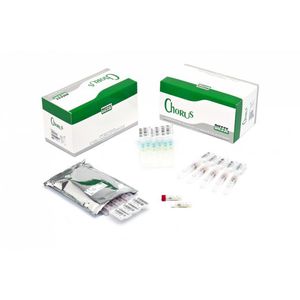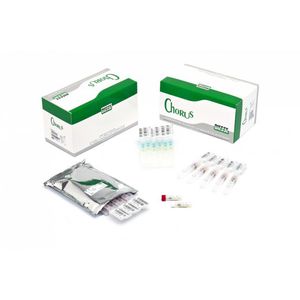
- Laboratory
- Laboratory medicine
- Infectious disease test kit
- Diesse Diagnostica Senese
IgG assay kit 81264/12serumplasmaELISA
Add to favorites
Compare this product
Characteristics
- Tested parameter
- IgG
- Sample type
- serum, plasma
- Analysis mode
- ELISA
- Result display time
90 min
- Specificity
100 %
- Sensitivity
92.5 %
Description
Poliomyelitis is a severe infection of the Central Nervous System, which primarily affects the spinal cord neurons and can lead to paralysis and death.
The infection is caused by three types of Poliovirus (1, 2 and 3), belonging to the Enterovirus genus.
The infection can occur by fecal-oral route, by ingesting contaminated water or food, or saliva and droplets emitted by sick people during coughing and sneezing.
In more than 90% of the infections, the patient does not suffer any symptoms; in the remaining cases, the symptoms are fever, nausea, vomiting, diarrhoea and sore throat; very rarely the paralysis is seen.
There exists no treatment of the disease, only symptomatic therapy, which can partially reduce the effects of the infection, and prevention measures through vaccination.
In many Asiatic countries poliomyelitis is still endemic, but WHO has started ambitious projects to eradicate the disease.
The diagnosis of poliomyelitis can be performed by isolation and detection of the virus or by determination of antibodies in the blood using neutralization tests and, more recently, ELISA technique.
The detection, in the tested sample, of IgG class antibodies against the three types of Poliovirus can be due to a previous infection or to immunization by vaccination.
Method:
Immunoenzymatic method for the qualitative determination of IgG-class antibodies to Poliovirus IgG in human serum and human plasma, using a disposable device applied on the Chorus and Chorus TRIO instruments.
Catalogs
No catalogs are available for this product.
See all of Diesse Diagnostica Senese‘s catalogsRelated Searches
- Assay kit
- Blood assay kit
- Serum assay kit
- Immunoassay assay kit
- Plasma assay kit
- Infectious disease detection kit
- Blood rapid diagnostic test
- Rapid lateral flow test
- Immunoassay rapid diagnostic test
- Cassette rapid diagnostic test
- Rapid virus test
- Respiratory infection test kit
- Clinical assay kit
- Whole blood rapid diagnostic test
- Rapid respiratory infection test
- ELISA assay kit
- IgG test kit
- COVID-19 rapid diagnostic test
- Feces test kit
- Influenza A assay kit
*Prices are pre-tax. They exclude delivery charges and customs duties and do not include additional charges for installation or activation options. Prices are indicative only and may vary by country, with changes to the cost of raw materials and exchange rates.


















